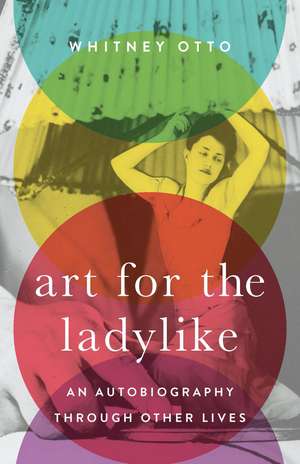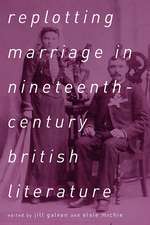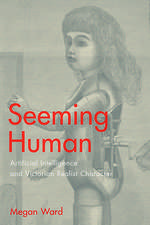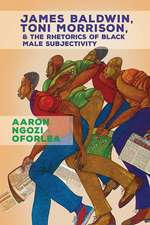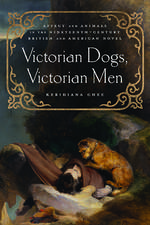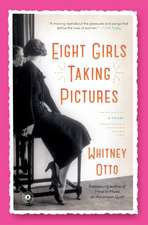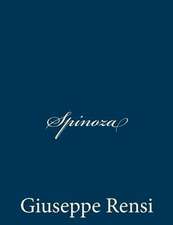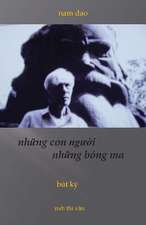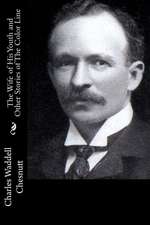Art for the Ladylike: An Autobiography through Other Lives: 21st Century Essays, cartea 1
Autor Whitney Ottoen Limba Engleză Paperback – 6 mar 2021 – vârsta ani
In Art for the Ladylike, Whitney Otto limns the lives of eight pioneering women photographers—Sally Mann, Imogen Cunningham, Judy Dater, Ruth Orkin, Tina Modotti, Lee Miller, Madame Yvonne, and Grete Stern—to in turn excavate her own writer’s life. The result is an affecting exploration of what it means to be a woman, what it means to be an artist, and the perils and rewards of being both at once. In considering how feminism, career, and motherhood were entangled throughout her subjects’ lives as they tirelessly sought to render their visions and paved the way for others creating within the bounds of domesticity, Otto assesses her own struggles with balancing writing and the pulls of home life. Ultimately, she ponders the persistent question that artistic women face in a world that devalues women’s ambition: If what we love is what we are, how do those of us with multiple loves forge lives with room for everything?
Din seria 21st Century Essays
-
 Preț: 160.80 lei
Preț: 160.80 lei -
 Preț: 144.33 lei
Preț: 144.33 lei -
 Preț: 108.17 lei
Preț: 108.17 lei -
 Preț: 140.55 lei
Preț: 140.55 lei -
 Preț: 111.26 lei
Preț: 111.26 lei -
 Preț: 105.16 lei
Preț: 105.16 lei -
 Preț: 112.49 lei
Preț: 112.49 lei -
 Preț: 106.20 lei
Preț: 106.20 lei -
 Preț: 166.05 lei
Preț: 166.05 lei -
 Preț: 127.45 lei
Preț: 127.45 lei -
 Preț: 108.03 lei
Preț: 108.03 lei -
 Preț: 140.47 lei
Preț: 140.47 lei -
 Preț: 103.91 lei
Preț: 103.91 lei -
 Preț: 155.05 lei
Preț: 155.05 lei -
 Preț: 147.11 lei
Preț: 147.11 lei -
 Preț: 145.96 lei
Preț: 145.96 lei -
 Preț: 174.52 lei
Preț: 174.52 lei -
 Preț: 178.10 lei
Preț: 178.10 lei -
 Preț: 148.67 lei
Preț: 148.67 lei -
 Preț: 170.24 lei
Preț: 170.24 lei -
 Preț: 132.52 lei
Preț: 132.52 lei -
 Preț: 176.88 lei
Preț: 176.88 lei -
 Preț: 143.44 lei
Preț: 143.44 lei -
 Preț: 144.05 lei
Preț: 144.05 lei -
 Preț: 148.41 lei
Preț: 148.41 lei -
 Preț: 149.08 lei
Preț: 149.08 lei -
 Preț: 166.85 lei
Preț: 166.85 lei -
 Preț: 172.68 lei
Preț: 172.68 lei -
 Preț: 103.72 lei
Preț: 103.72 lei -
 Preț: 119.18 lei
Preț: 119.18 lei -
 Preț: 104.95 lei
Preț: 104.95 lei
Preț: 173.49 lei
Nou
Puncte Express: 260
Preț estimativ în valută:
33.20€ • 34.66$ • 27.47£
33.20€ • 34.66$ • 27.47£
Carte tipărită la comandă
Livrare economică 31 martie-07 aprilie
Preluare comenzi: 021 569.72.76
Specificații
ISBN-13: 9780814257821
ISBN-10: 0814257828
Pagini: 312
Dimensiuni: 140 x 216 x 25 mm
Greutate: 0.41 kg
Ediția:First Edition, First Edition, Paperback original
Editura: Ohio State University Press
Colecția Mad Creek Books
Seria 21st Century Essays
ISBN-10: 0814257828
Pagini: 312
Dimensiuni: 140 x 216 x 25 mm
Greutate: 0.41 kg
Ediția:First Edition, First Edition, Paperback original
Editura: Ohio State University Press
Colecția Mad Creek Books
Seria 21st Century Essays
Recenzii
“Whitney Otto has woven a work of breathtaking texture. Art for the Ladylike is a love letter to the resilience and beauty of women who deign to make art. This book brought me back to myself.” —Lidia Yuknavitch
“A fascinating and peripatetic memoir, Whitney Otto’s fearless, free-range narrative investigates parenting, class, sexuality, and worlds beyond. Startling, funny, and compassionate—reminiscent of Rilke’s Letters to a Young Poet—this is an invaluable guide to the life of the mind and the soul of an artist.” —Diana Abu-Jaber
“I loved this fascinating memoir of a life experienced through the understanding of art. It’s inventive, thoughtful, and deeply informed. Brava!” —Roxana Robinson
“In this inviting blend of biography and memoir, novelist Otto (How to Make an American Quilt) examines her life in terms of the women artists who influenced her.…Otto provides a fascinating tour of art through the lens of her own experience. Creatives of all sorts will enjoy [her] wide-ranging insights.” —Publishers Weekly
“It is not easy to be a woman who makes art, but reading about the lives of these female artists, one begins to feel like it is the only way to live.” –Sierra Bellows, American Scholar
“Whitney Otto merges biography and memoir to generate a poetic and contemplative account of the women artists who have influenced her. … Throughout the book, [she] further untangles the challenges at play between motherhood, domesticity and creativity. … At a time when many people’s career paths and ways of working are in flux, this book can provide solace that professional and private struggles are something all women can relate to.” –HundredHeroines.org
“A fascinating and peripatetic memoir, Whitney Otto’s fearless, free-range narrative investigates parenting, class, sexuality, and worlds beyond. Startling, funny, and compassionate—reminiscent of Rilke’s Letters to a Young Poet—this is an invaluable guide to the life of the mind and the soul of an artist.” —Diana Abu-Jaber
“I loved this fascinating memoir of a life experienced through the understanding of art. It’s inventive, thoughtful, and deeply informed. Brava!” —Roxana Robinson
“In this inviting blend of biography and memoir, novelist Otto (How to Make an American Quilt) examines her life in terms of the women artists who influenced her.…Otto provides a fascinating tour of art through the lens of her own experience. Creatives of all sorts will enjoy [her] wide-ranging insights.” —Publishers Weekly
“It is not easy to be a woman who makes art, but reading about the lives of these female artists, one begins to feel like it is the only way to live.” –Sierra Bellows, American Scholar
“Whitney Otto merges biography and memoir to generate a poetic and contemplative account of the women artists who have influenced her. … Throughout the book, [she] further untangles the challenges at play between motherhood, domesticity and creativity. … At a time when many people’s career paths and ways of working are in flux, this book can provide solace that professional and private struggles are something all women can relate to.” –HundredHeroines.org
Notă biografică
Whitney Otto is the author of five novels, including the New York Times bestseller How to Make an American Quilt, which was later made into a movie of the same name, and Eight Girls Taking Pictures. Her work has appeared in the New York Times, the Los Angeles Times, the San Francisco Chronicle, and in several anthologies. She lives in Portland, Oregon, with her family.
Extras
I.
If an autobiography tells the story of a life then this “autobiography”—these women, these other artists, these bits and pieces from my past, my thoughts—this is what the story of my life looks like. Imagine one of those “hidden puzzle” pictures in the children’s magazine Highlights, where someone has drawn, say a city scene, asking the reader to locate the “hidden” butterfly, the bucket, the book, the ax, the horse, and the hat that are really all there, in plain sight. You just have to readjust your idea about the city scene; to see past the bus stop and the cars, to notice the butterfly.
So, I’ve been chipping away at this book since 2002, writing a nearly complete first draft at that time. I would put it down, then pick it up, then write something else, then pick it up, then put it down, then write something else, then pick it up and so on. It’s said that “life is short and art is long”; it turns out that writing about art is even longer. I wasn’t always sure what I was writing, until I understood it as autobiography; that we are the things we love.
II.
Are women photographers fundamentally different from male photographers? Taking a picture can be an aggressive, predatory, and often public act; one “takes” or “shoots” a subject (women are often raised to be quieter, more circumspect). Photographing a person is a form of staring. It’s been said that men watch women overtly, while women watch discreetly. Is there any social effect when a woman is explicit in her observing? Is there something disquieting about a woman who is clearly paying close attention?
III.
When Georgia O’Keeffe was trying to find herself as a painter, before Stieglitz, before New York, and the flowers and the desert and the fame, she wrote:
I can’t live where I want to, I can’t go where I want to go, I can’t do what I want to, I can’t even say what I want to. I decided I was a very stupid fool not to at least paint as I wanted to.
This was my mantra as a young woman just leaving college, feeling limited and lost, and knowing what I wanted to do (write) without knowing exactly how to do it. For now, this quote must suffice as the stated intention of this book of essays.
If an autobiography tells the story of a life then this “autobiography”—these women, these other artists, these bits and pieces from my past, my thoughts—this is what the story of my life looks like. Imagine one of those “hidden puzzle” pictures in the children’s magazine Highlights, where someone has drawn, say a city scene, asking the reader to locate the “hidden” butterfly, the bucket, the book, the ax, the horse, and the hat that are really all there, in plain sight. You just have to readjust your idea about the city scene; to see past the bus stop and the cars, to notice the butterfly.
So, I’ve been chipping away at this book since 2002, writing a nearly complete first draft at that time. I would put it down, then pick it up, then write something else, then pick it up, then put it down, then write something else, then pick it up and so on. It’s said that “life is short and art is long”; it turns out that writing about art is even longer. I wasn’t always sure what I was writing, until I understood it as autobiography; that we are the things we love.
II.
Are women photographers fundamentally different from male photographers? Taking a picture can be an aggressive, predatory, and often public act; one “takes” or “shoots” a subject (women are often raised to be quieter, more circumspect). Photographing a person is a form of staring. It’s been said that men watch women overtly, while women watch discreetly. Is there any social effect when a woman is explicit in her observing? Is there something disquieting about a woman who is clearly paying close attention?
III.
When Georgia O’Keeffe was trying to find herself as a painter, before Stieglitz, before New York, and the flowers and the desert and the fame, she wrote:
I can’t live where I want to, I can’t go where I want to go, I can’t do what I want to, I can’t even say what I want to. I decided I was a very stupid fool not to at least paint as I wanted to.
This was my mantra as a young woman just leaving college, feeling limited and lost, and knowing what I wanted to do (write) without knowing exactly how to do it. For now, this quote must suffice as the stated intention of this book of essays.
Cuprins
Contents
An Introduction in Three Parts and a Final Thought
Goodnight Kiss: Sally Mann
Inventing the Male Nude: Imogen Cunningham
The Woman with the Mink Sleeves: Judy Dater
Don’t Be Afraid to Travel Alone: Ruth Orkin
The Sentimental Problem of Tina Modotti: Tina Modotti
A War of My Own: Lee Miller
Be original or die!: Madame Yevonde
Psychoanalysis Will Help You: Grete Stern
Epilogue: Revisiting The Advantages of Being a Woman Artist, Thoughts on Writing and One Question
Acknowledgments
An Introduction in Three Parts and a Final Thought
Goodnight Kiss: Sally Mann
Inventing the Male Nude: Imogen Cunningham
The Woman with the Mink Sleeves: Judy Dater
Don’t Be Afraid to Travel Alone: Ruth Orkin
The Sentimental Problem of Tina Modotti: Tina Modotti
A War of My Own: Lee Miller
Be original or die!: Madame Yevonde
Psychoanalysis Will Help You: Grete Stern
Epilogue: Revisiting The Advantages of Being a Woman Artist, Thoughts on Writing and One Question
Acknowledgments
Descriere
Explores the lives of eight pioneering women photographers to consider the struggles, perils, and rewards of being a woman artist.
